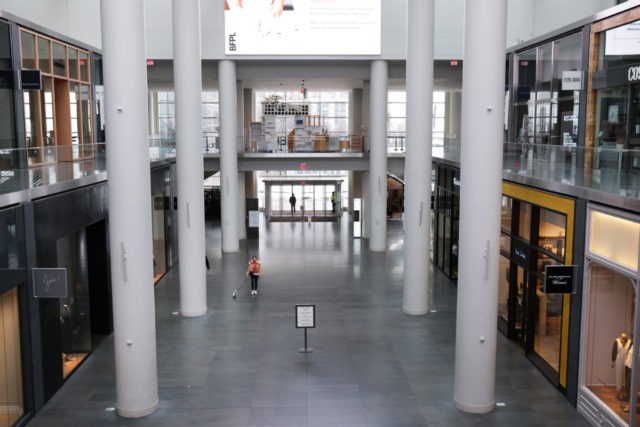BALTIMORE (AP) — U.S. retail sales tumbled by a record 16.4 percent from March to April as business shutdowns caused by the coronavirus kept shoppers away, threatened the viability of stores across the country and further weighed down a sinking economy.
The Commerce Department’s report Friday on retail purchases showed a sector that has collapsed so quickly that sales over the past 12 months are down a crippling 21.6 percent. The severity of the decline is unrivaled for retail figures that date back to 1992. The monthly decline in April nearly doubled the previous record drop of 8.3 percent — set just one month earlier.
The sharpest declines from March to April were at clothing, electronics and furniture stores. A long-standing migration of consumers toward online purchases is accelerating, with that segment posting a 8.4 percent monthly gain. Measured year over year, online sales surged 21.6 percent.
Other than online, not a single retail category was spared in April. Auto dealers suffered a monthly drop of 13 percent. Furniture stores absorbed a 59 percent plunge. Electronics and appliance stores were down over 60 percent. Retailers that sell building materials posted a drop of roughly 3 percent. After panic buying in March, grocery sales fell 13 percent.
Clothing-store sales tumbled 79 percent, department stores 29 percent. Restaurants, some of which are already starting to close permanently, endured a nearly 30 percent decline despite shifting aggressively to takeout and delivery orders.
For a retail sector that had already been reeling, a back-to-back free-fall in spending poses a grave risk. Department stores like Neiman Marcus and J.Crew have filed for bankruptcy protection. Hotels, restaurants and auto dealerships are in danger. Nearly $1 of every $5 spent at retailers last month went to non-store retailers.
by a group of academic economists found that a one-month closure could wipe out 31 percent of non-grocer retailers. A four-month closure could force 65 percent to close.
The plunge in retail spending is a key reason why the U.S. economy is contracting. Purchases at retailers are a major component of overall consumer spending, which fuels about 70 percent of economic activity.
With few Americans shopping, traveling, eating out or otherwise spending normally, economists are projecting that the gross domestic product — the broadest gauge of economic activity — is shrinking in the April-June quarter at a roughly 40 percent annual rate. That would be the deepest quarterly drop on record.
Spending tracked by Opportunity Insights suggests that consumer spending might have bottomed out around mid-April before beginning to tick up slightly, at least in the clothing and general merchandise categories. But spending on transportation, restaurants, hotels and arts and entertainment remains severely depressed.
Credit card purchases tracked by JPMorgan Chase found that spending on such necessities as groceries, fuel, phone service and auto repair declined 20 percent on a year-over-year basis. By contrast, spending on “non-essentials,” such as meals out, airfare and personal services like salons or yoga classes, plummeted by a much worse 50 percent.

COMMENTS
Please let us know if you're having issues with commenting.